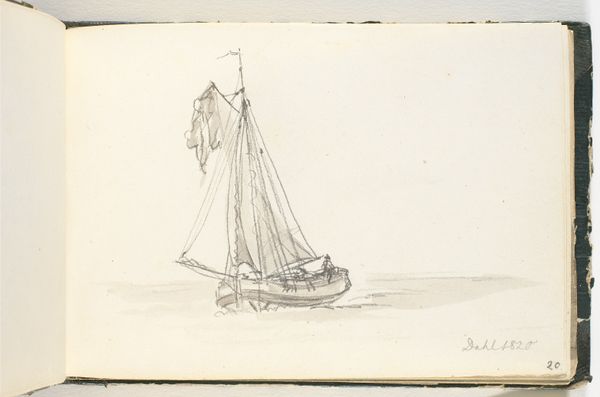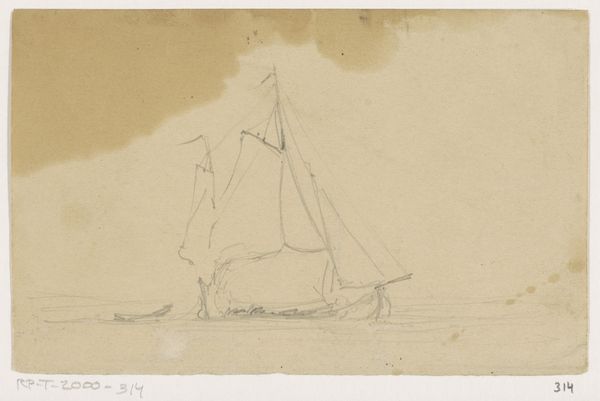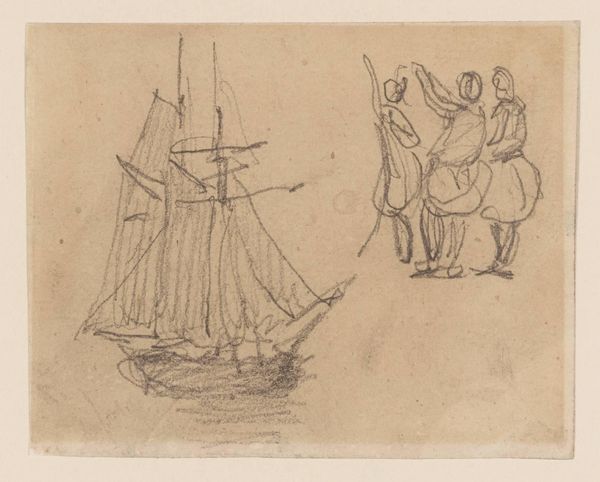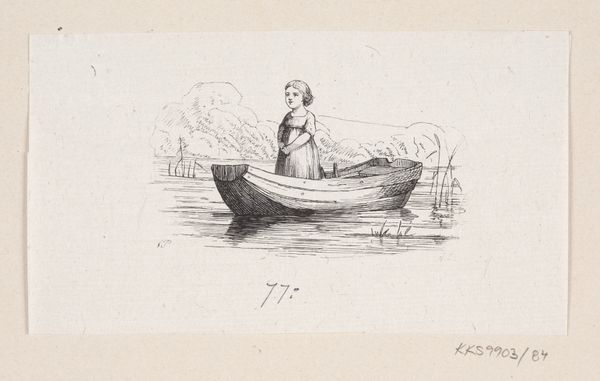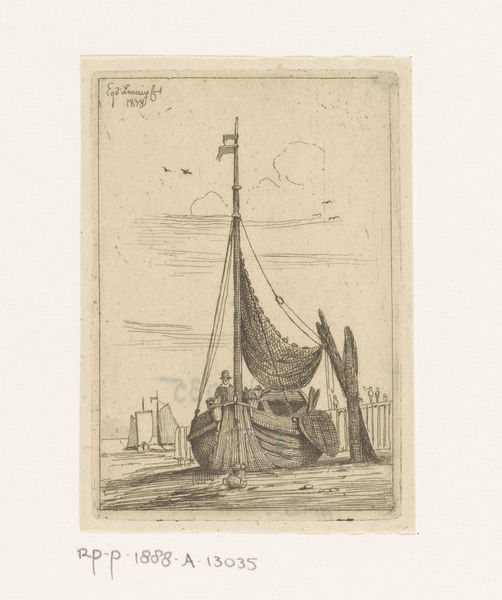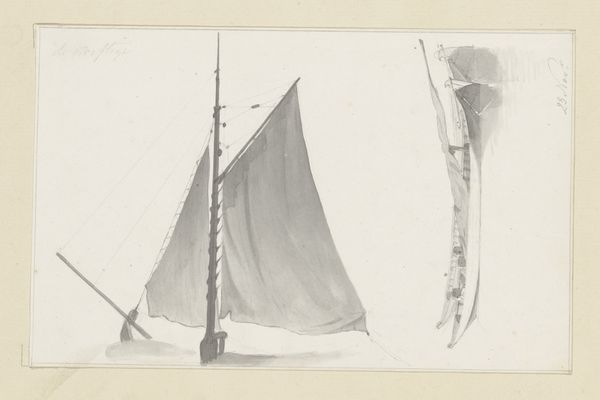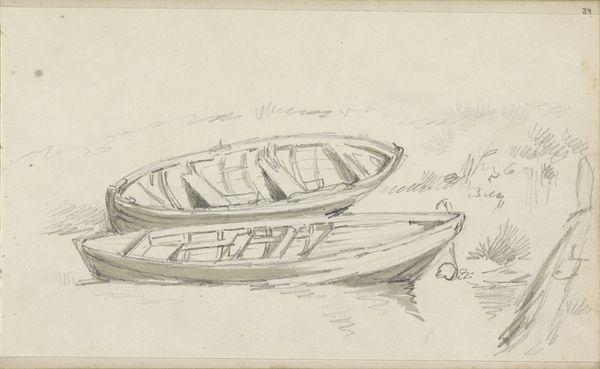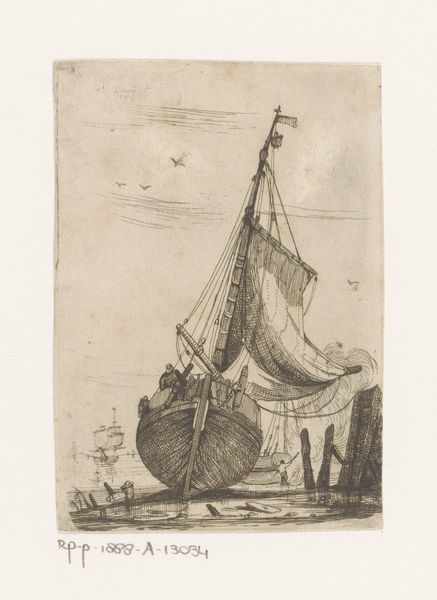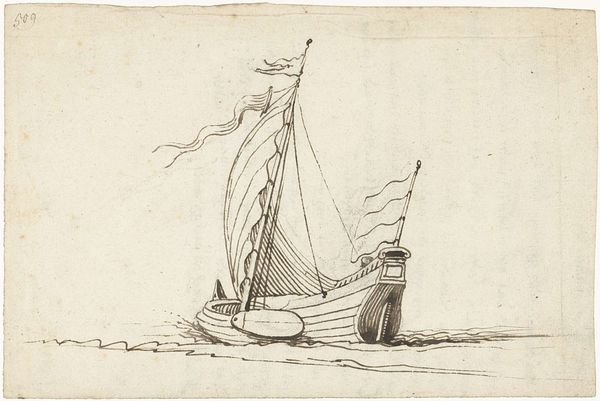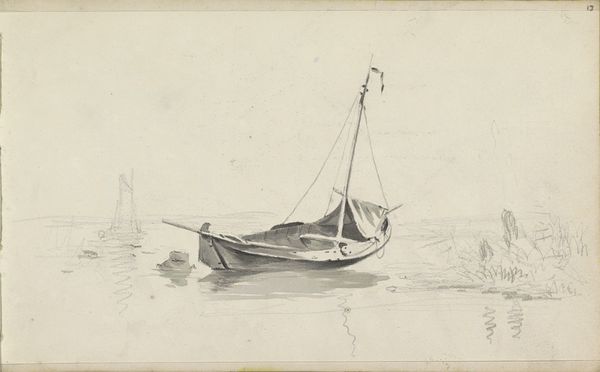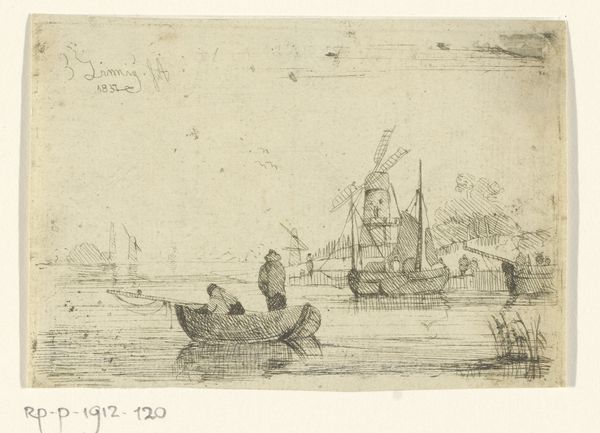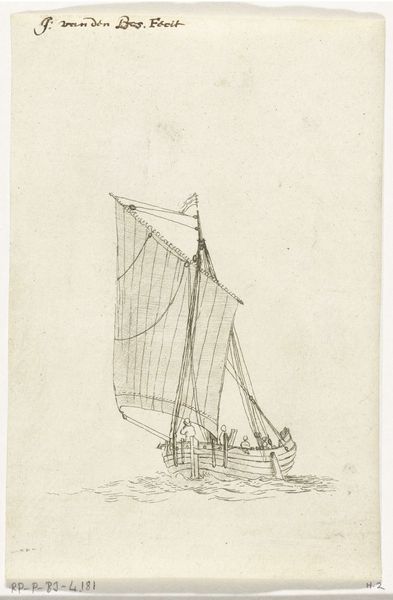
drawing, pencil
#
drawing
#
pencil sketch
#
landscape
#
figuration
#
pencil
#
genre-painting
Dimensions: height 99 mm, width 153 mm
Copyright: Rijks Museum: Open Domain
Curator: Here we have Johannes Tavenraat's "Studies of Ships and a Fisherwoman, Seen from the Back," dating from 1862, currently held in the Rijksmuseum collection. Editor: It's quite evocative, isn't it? A wistful sketch. The light pencil strokes give everything a feeling of transience, as if we’re glimpsing a scene just for a moment. Curator: The use of pencil on paper allows for an examination of labor. Sketching served as preparatory work, a record of observation later informing the larger, more “finished” works. Note the immediacy offered by the pencil as a direct translation from observation to paper. It speaks of process and record-keeping, quite utilitarian. Editor: Yes, but consider what's being recorded! The ships with their skeletal sails—they carry an almost mythical quality, emblems of journeys and hardship. The fisherwoman, though seen from the back, hints at stories of the sea, resilience, loss… all bundled in that simple garb. She’s a symbol, don't you think, of a life inextricably linked to the water. Curator: Perhaps. I am intrigued, though, by the very lack of contextualisation. The quick strokes give the sense of ephemerality in labour, almost casual; they denote a record or documentation for another project perhaps? We see evidence of preparation—not necessarily meaning-making in and of itself, just material documentation of production. Editor: But isn't that what gives it its strength? The universality, the almost dreamlike quality that touches on shared, perhaps deeply buried archetypes of maritime existence. The boats call to mind those from ancient seafaring sagas. Curator: True, but those boats wouldn’t have simply emerged spontaneously. These, most likely, were working vessels; fishing boats supporting a regional economy. The artist's recording offers a glimpse into the material conditions of the time. I find the method a fascinating reminder of economic and production networks rather than just Romantic yearnings. Editor: I see your point. Even so, I'm struck by how powerfully those sparse lines convey emotion. The implied narrative resonates long after one considers the paper and pencil it was produced with. Curator: It is remarkable how suggestive something as basic as a sketch can be, even though I may interpret that resonance differently. Editor: Precisely. And it seems we’ve both unearthed something vital here, just in our different ways.
Comments
No comments
Be the first to comment and join the conversation on the ultimate creative platform.
